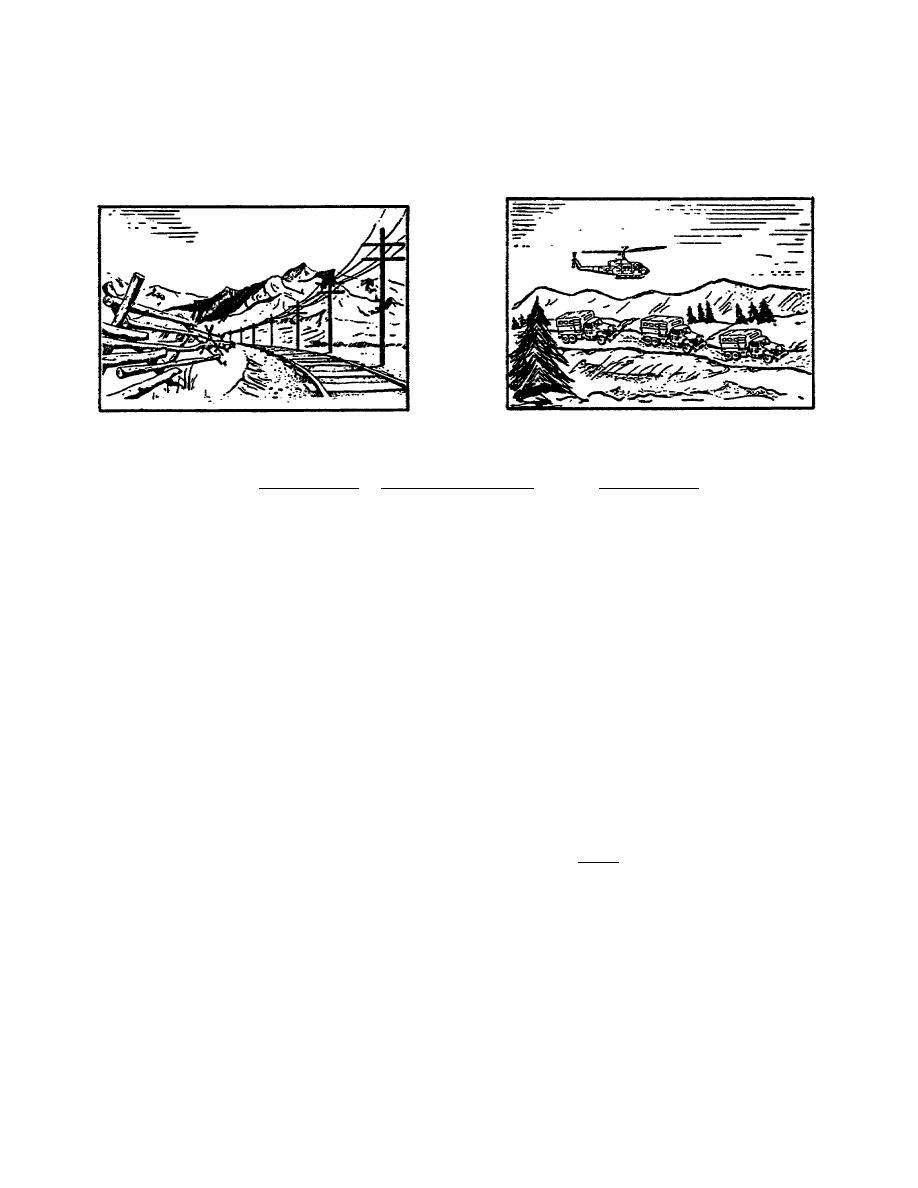
tracks (or any set of parallel lines) as they disappear in the distance.
Leading lines can for this reason also be perspective lines.
But
perspective doesn't apply only to lines. It is also the reason a distant
mountain will appear smaller than a nearby person, even though their actual
sizes differ immensely.
Figure 3-10A.
"Strong" perspective
Figure 3-10B.
"Weak" perspective
b. To adjust perspective, think of a picture having three general areas
of depth, called foreground, middle distance, and background.
By placing
something in each of these picture distances, you can emphasize the depth of
a picture, particularly if you use familiar objects because the viewer has a
good idea of their actual size.
The difference between what the viewer
knows is an object's actual size with its apparent size in the picture will
give strong clues about relative distances and will let him draw a
conclusion about how far apart things really were.
A simple example may
make this clearer. Suppose you took a picture of a very simple landscape:
three trees on an open plain.
The first tree is very large.
The second
tree, which is the same type and general shape, and clearly full grown, is
considerably smaller, and the third, also the same type, is quite tiny and
much nearer the horizon line.
A viewer would most likely conclude that
there is a great deal of depth in this scene. But a similar scene in which
the trees are only slightly different in size would lead the viewer to
conclude that there is relatively little depth.
c. Perspective is almost entirely a matter of lens position. (The only
other way to alter a perspective is by the use of the swing and tilt
controls on view cameras, but these are not being considered here).
Changing lens focal lengths doesn't really alter the perspective of a scene;
it only appears that way. Changing focal lengths does allow you to move the
camera to a different position (nearer to or farther from the subject) while
keeping the main subject the same size.
By moving the camera, you have
altered the perspective. Changing the lens focal length alone didn't change
the perspective one bit.
You can prove this to yourself if you have a
camera with two or more lenses of different focal lengths. Without moving
the camera, take a picture of a scene with some depth to it with a different
focal length lens.
When you have developed the negatives, first make a
print of the picture taken with the longest focal length lens. Then make a
print with a negative of a shorter lens
61


 Previous Page
Previous Page
